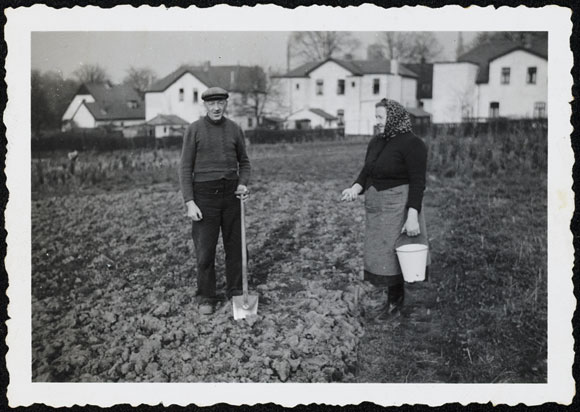Slovenians in the Netherlands

De Hopel
Avgust and Pavla Čebin at work on the land in the De Hopel colliery (1956).
The arrival of the first newcomers between 1907 and 1910 laid the basis for the international village that would become De Hopel, traces of which can still be seen today. They came from Germany, Poland, Italy and Yugoslavia and their descendants still live there. Slovenian life in the colony would not have been terribly different in De Hopel or, for example, De Husken in Heerlen or De Rozengaard in Brunssum. Every district had at the very least a Slovenian choral society and a Tamburica - a group of musicians that plays the tamburica, a typical Yugoslav stringed instrument with a long neck, a type of lute. The latter existed in De Hopel from 1946 to 1952 and was led by Avgust Čebin and his son Leo. De Hopel today is perhaps the only remaining colony in South Limburg that still exudes the character of the period when the mines arrived and De Laura built the distinctive workers' homes. Between 1907 and 1910 the buildings, which had rounded gables at the front, were whitewashed and tarred between the planks. Red roof tiles were placed. The houses had large gardens surrounded by wooden fencing. In 1980, the houses in De Hopel were deemed protected monuments. This led to them becoming the subject of a large-scale renovation project which has now been completed.
Collection:
Čebin 02
